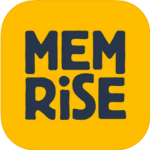
Romaji
Rōmaji ( ローマ字 / ろーまじ) is the romanization of Japanese words into English letters. It’s a great tool to help you sound out Japanese words when you don’t quite know how to read Japanese yet. You could say it’s the fourth method of writing Japanese after kanji, hiragana and katakana.
Let’s take a look at exactly what rōmaji is, what it looks like in action, whether it’s a good idea to learn Japanese with it and what resources you can use to grasp Japanese using rōmaji like a pro.
Contents
- What Is Japanese Rōmaji?
- The Complete Table Guide to Romaji
- Should You Learn Japanese with Rōmaji?
- Learn Japanese with Romaji Using 4 Rocking Resources
- And One More Thing...
Download: This blog post is available as a convenient and portable PDF that you can take anywhere. Click here to get a copy. (Download)
What Is Japanese Rōmaji?
Rōmaji is often used to help non-Japanese speakers sound out Japanese words without having to figure out the syllabaries inherent in the language. You may be surprised to learn that it’s also used by Japanese people, who mostly grew up having to learn rōmaji in school to communicate with foreigners.
Here’s an example of what rōmaji looks like:
Kanji: 可愛い
Hiragana: かわいい
Rōmaji: Kawaii
English: Cute
The rōmaji system was developed in the mid-16th century by Portuguese missionaries who needed to communicate with Japanese people without having to learn all that crazy kanji. As you’ve seen, it’s effective enough that it’s still being used to this day.
The Complete Table Guide to Romaji
Here’s what a rōmaji table using single kana would look like:
| Hiragana | Katakana | Romaji |
|---|---|---|
| あ | ア | a |
| い | イ | i |
| う | ウ | u |
| え | エ | e |
| お | オ | o |
| か | カ | ka |
| き | キ | ki |
| く | ク | ku |
| け | ケ | ke |
| こ | コ | ko |
| さ | サ | sa |
| し | シ | shi |
| す | ス | su |
| せ | セ | se |
| そ | ソ | so |
| た | タ | ta |
| ち | チ | chi |
| つ | ツ | tsu |
| て | テ | te |
| と | ト | to |
| な | ナ | na |
| に | ニ | ni |
| ぬ | ヌ | nu |
| ね | ネ | ne |
| の | ノ | no |
| は | ハ | ha |
| ひ | ヒ | hi |
| ふ | フ | fu |
| へ | ヘ | he |
| ほ | ホ | ho |
| ま | マ | ma |
| み | ミ | mi |
| む | ム | mu |
| め | メ | me |
| も | モ | mo |
| や | ヤ | ya |
| ゆ | ユ | yu |
| よ | ヨ | yo |
| ら | ラ | ra |
| り | リ | ri |
| る | ル | ru |
| れ | レ | re |
| ろ | ロ | ro |
| わ | ワ | wa |
| を | ヲ | o |
| ん | ン | n |
Note that, although the characters ら (ラ), り (リ), る (ル), れ (レ) and ろ (ロ) are transliterated as “ra,” “ri,” “ru,” “re” and “ro,” respectively, the Japanese “r” sound is very different from the English one. Here are some tips on how to pronounce the Japanese “r” sound.
Here are the rōmaji sounds of characters that use dakuten (゛):
| Hiragana | Katakana | Romaji |
|---|---|---|
| が | ガ | ga |
| ぎ | ギ | gi |
| ぐ | グ | gu |
| げ | ゲ | ge |
| ご | ゴ | go |
| ざ | ザ | za |
| じ | ジ | ji |
| ず | ズ | zu |
| ぜ | ゼ | ze |
| ぞ | ゾ | zo |
| だ | ダ | da |
| ぢ | ヂ | ji (or dji) |
| づ | ヅ | zu (or dzu) |
| で | デ | de |
| ど | ド | do |
And here are the rōmaji sounds of characters that use handakuten (゜):
| Hiragana | Katakana | Romaji |
|---|---|---|
| ぱ | パ | pa |
| ぴ | ピ | pi |
| ぷ | プ | pu |
| ぺ | ペ | pe |
| ぽ | ポ | po |
Finally, here’s a rōmaji table with compound kana:
| Hiragana | Katakana | Romaji |
|---|---|---|
| きゃ | キャ | kya |
| きゅ | キュ | kyu |
| きょ | キョ | kyo |
| しゃ | シャ | sha |
| しゅ | シュ | shu |
| しょ | ショ | sho |
| ちゃ | チャ | cha |
| ちゅ | チュ | chu |
| ちょ | チョ | cho |
| にゃ | ニャ | nya |
| にゅ | ニュ | nyu |
| にょ | ニョ | nyo |
| ひゃ | ヒャ | hya |
| ひゅ | ヒュ | hyu |
| ひょ | ヒョ | hyo |
| みゃ | ミャ | mya |
| みゅ | ミュ | myu |
| みょ | ミョ | myo |
| りゃ | リャ | rya |
| りゅ | リュ | ryu |
| りょ | リョ | ryo |
| ぎゃ | ギャ | gya |
| ぎゅ | ギュ | gyu |
| ぎょ | ギョ | gyo |
| じゃ | ジャ | ja |
| じゅ | ジュ | ju |
| じょ | ジョ | jo |
| びゃ | ビャ | bya |
| びゅ | ビュ | byu |
| びょ | ビョ | byo |
| ぴゃ | ピャ | pya |
| ぴゅ | ピュ | pyu |
| ぴょ | ピョ | pyo |
A few things to keep in mind about rōmaji:
- Notice how the second table combines the basic vowel sounds in Japanese with the semivowels “y” ( や , ゆ and よ ) or “w” ( わ and を ).
- Japanese also has elongated vowel sounds indicated either by a macron (a horizontal line) over the vowel character (like in “rōmaji”) or by doubling the vowel character itself (like in “kawaii”). You can tell this is the case in the Japanese reading, where you’ll see either the “ー” character (like in ローマ字 ) or when two similar vowel sounds are right next to each other.
- If the original Japanese indicates that a consonant sound needs to be reproduced using the lowercase “つ” or “ツ,” it means you should double the consonant in rōmaji as well. For example, 河童 (かっぱ), which refers to a water-based mythological creature, will be romanized as kappa. (See that little “つ” in the hiragana reading?)
The key here is to reproduce the Japanese sounds as accurately as possible using the Roman / Latin alphabet.
Should You Learn Japanese with Rōmaji?
Of course, it is possible to learn Japanese with rōmaji. Whether you should learn Japanese using the Roman alphabet is another matter. There are a few pros and cons you should take into consideration.
The Pros of Learning Japanese with Rōmaji
- It can help with word association, especially with the hiragana syllabary. Rōmaji and hiragana often go hand-in-hand for the Japanese learner. Rōmaji is the syllable sound, while hiragana is the syllable character. When you’re first starting out, you’ll likely use rōmaji to learn hiragana.
- Rōmaji is used to type in Japanese quickly. While many physical Japanese keyboards have hiragana keys, most digital Japanese keyboards require rōmaji to properly select hiragana or kanji characters. In this case, you won’t be able to type in Japanese unless you understand the basics of rōmaji.
- Rōmaji can be used to focus on spoken Japanese and get conversational faster. If you don’t want to learn the kanas and kanji, you can use rōmaji to skip straight to the spoken part. This might be a good choice if you’re only traveling to Japan or are learning the language exclusively for speaking purposes.
The Cons of Learning Japanese with Rōmaji
- It’s not actively used by native Japanese speakers and writers. While rōmaji is used by Japanese people to communicate with foreigners on paper, it’s not used for any other purpose except for typing up kanji and hiragana online. If you want to learn Japanese, learning the appropriate writing systems is the key to fluency.
- Rōmaji will leave you at a disadvantage once you start learning Japanese homophones, homonyms and complex pronunciations. Homonyms and homophones are two or more words that sound the same but have completely different meanings and/or spellings. Without the kanji to differentiate the words and the proper context, you may run into some comprehension problems. For example, take a look at this Japanese tongue twister: in rōmaji, it’s written as “sumomomomomomomomonouchi.” It means “both plums and peaches are members of the peach family,” and written out in rōmaji, it just looks like sheer madness! Write it in kanji, and it suddenly makes a lot more sense: 李も桃も桃のうち (すもももももももものうち).
- Knowing only rōmaji is impractical in the long run. As mentioned earlier, it’s possible to learn Japanese with rōmaji, but if you plan on visiting or living in Japan, you might find yourself wishing you’d learned how to read in the native writing system. Imagine being in Japan trying to get from Point A to Point B, but having to stop every 10 minutes to ask a Japanese person what a character on the map means. Things would be much easier if you’d just learn hiragana, at the very least. You can easily knock out the basics of hiragana in one night!
So should you learn rōmaji? Of course! It’s a vital part of learning Japanese and is very easy for English speakers to pick up since there really is very little to learn.
Should you exclusively learn rōmaji in lieu of the other Japanese writing systems? We don’t recommend it if you really care about becoming fluent or plan to visit Japan.
But that doesn’t mean you can’t start with rōmaji then move into the other writing systems as you learn.
Whatever you decide, there are resources available that allow you to learn Japanese using rōmaji. We have gathered some for you below!
Learn Japanese with Romaji Using 4 Rocking Resources
Memrise (Genki I — Romaji)
Memrise is a fun app that’s formatted almost like a video game, with clear goals and objectives as well as spaced repetition learning (SRS) that can help any beginner master Japanese and other languages.
This particular lesson from Memrise introduces over 200 common Japanese words taken from the “Genki” learning system, one of the most popular Japanese textbooks out there.
You’ll find everything you need to form a solid beginner vocabulary, including animal words, useful verbs, time-related vocab and so much more—all entirely in rōmaji. If you want to know more, check out this Memrise review.
Pimsleur
Pimsleur is an online program that focuses on mastering spoken Japanese before delving into kanji and the kanas. The method, which has various levels depending on your Japanese knowledge, features interactive flashcards and audio language lessons you can listen to pretty much anywhere.
The program is excellent if want to learn spoken Japanese, as it focuses mainly on speaking and proper pronunciation. There’s a bit of reading instruction, but the main strengths of the program are in its thorough audio lessons.
While Pimsleur is a bit pricey, they do offer a free lesson so you can assess whether or not this program is good for you. You can also give this Pimsleur review a go while you’re at it.
“Oxford Take Off in Japanese”
This multimedia software from Oxford Dictionaries is essential to have on hand while you learn Japanese with rōmaji.
This language-learning program focuses heavily on audio instruction as a supplement to a workbook that’s presented almost entirely in rōmaji. You can listen to the coursework in the car or while doing other things, then sit down with the book to reinforce what you’ve learned.
Beginners will benefit the most from this software and the audio CDs, as they’re tailored specifically for novice learners. Use this program if you want to jump right into speaking and listening.
“Colloquial Japanese: The Complete Course for Beginners”
This resource, which comes with downloadable audio, is great for those who want to start their Japanese-learning journey with rōmaji.
The step-by-step course focuses on spoken Japanese and reading rōmaji before delving into listening skills and kana.
The writing systems are introduced gradually over the course of the program. However, most of these are accompanied by rōmaji, and you can easily choose whether you want to follow along or prefer to stick to the rōmaji.
This is definitely a great resource to have on hand as a newbie, especially if you’re using rōmaji to ease your way into the Japanese writing systems.
Isn’t rōmaji an incredible tool?
Although we don’t recommend that you exclusively learn Japanese using rōmaji if your goal is to be fully fluent, it’s still a really handy little system of writing to use if you want to dive straight into speaking the language.
In order to be considered fluent, you’ll eventually have to learn the kana and kanji. You can use the resources above alongside online learning programs like Coscom Japanese to cover the basics.
You can also turn to FluentU, which has a collection of videos with dual-language subtitles.
FluentU takes authentic videos—like music videos, movie trailers, news and inspiring talks—and turns them into personalized language learning lessons.
You can try FluentU for free for 2 weeks. Check out the website or download the iOS app or Android app.
P.S. Click here to take advantage of our current sale! (Expires at the end of this month.)

Work hard and study! Or should I say, ganbatte benkyō shiyou!
Download: This blog post is available as a convenient and portable PDF that you can take anywhere. Click here to get a copy. (Download)
And One More Thing...
If you love learning Japanese with authentic materials, then I should also tell you more about FluentU.
FluentU naturally and gradually eases you into learning Japanese language and culture. You'll learn real Japanese as it's spoken in real life.
FluentU has a broad range of contemporary videos as you'll see below:

FluentU makes these native Japanese videos approachable through interactive transcripts. Tap on any word to look it up instantly.

All definitions have multiple examples, and they're written for Japanese learners like you. Tap to add words you'd like to review to a vocab list.

And FluentU has a learn mode which turns every video into a language learning lesson. You can always swipe left or right to see more examples.

The best part? FluentU keeps track of your vocabulary, and gives you extra practice with difficult words. It'll even remind you when it’s time to review what you’ve learned. You'll have a 100% personalized experience.
Start using the FluentU website on your computer or tablet or, better yet, download the FluentU app from the iTunes or Google Play store. Click here to take advantage of our current sale! (Expires at the end of this month.)






